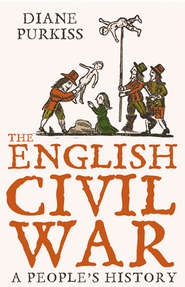
Полная версия:
The English Civil War: A People’s History

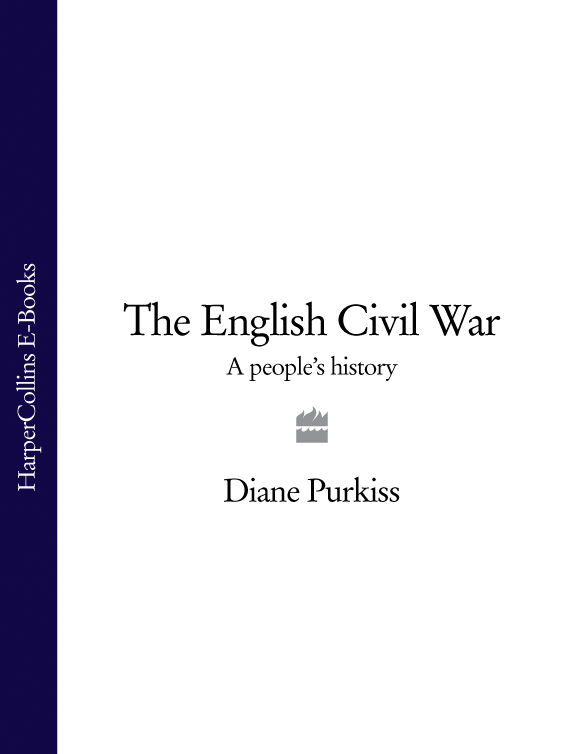
The English Civil War
A People’s History
Diane Purkiss
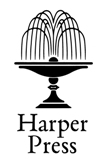
Table of Contents
Cover Page
Title Page
Maps
An Epistle to the Gentle Reader
I The Last Cavalier?
II The Meek-Eyed Peace
III Two Women: Anna Trapnel and Lucy Hay
IV The Bishops’ Wars, the Three Kingdoms, and Montrose
V Pym against the Papists
VI Stand Up, Shout Mars
VII The Valley of Decision
VIII Bright-Harnessed Angels: Edgehill
IX Down with Bishops and Bells: Iconoclasm
X The Death of Dreams
XI The War over Christmas
XII The Queen’s Tale: Henrietta Maria
XIII Newbury Fight
XIV Two Capitals: Oxford and London
XV The Bitterness of War
XVI Two Marriages
XVII The Power of Heaven: Marston Moor and Cromwell
XVIII The Cookery Writers’ Tales: General Hunger, Hannah Wolley, Kenelm Digby and the Deer of Corse Lawn
XIX Twenty Thousand Cornish Boys: The Battle of Lostwithiel
XX The Nation’s Nightmares
XXI Th’ Easy Earth That Covers Her: The Children’s Tales
XXII God with Us! Montrose’s Campaign
XXIII New Professions: Parliament Joan and Richard Wiseman
XXIV The World is Turned Upside Down: The New Model Army and Naseby Fight
XXV Ashes: The Siege of Taunton and the Clubmen
XXVI The Birds in the Greenwoods are Mated Together: Anne Halkett and the Escape of James II
XXVII Nor Iron Bars a Cage: The Capture of Charles I
XXVIII A New Heaven and a New Earth: Anna Trapnel and the Levellers
XXIX Stand Up Now, Stand Up Now: Gerrard Winstanley and the Diggers
XXX The Second Civil War
XXXI To Carisbrooke’s Narrow Case: Charles I in Captivity
XXXII Oh, He is Gone, and Now hath Left Us Here: The Trial and Execution of Charles I
XXXIII Into Another Mould? The Aftermath
FURTHER READING
INDEX
P.S. Ideas, interviews & features…
Interview
About the Book
Read on
Acknowledgements
About the Author
Praise
By the Same Author
Copyright
About the Publisher
Maps
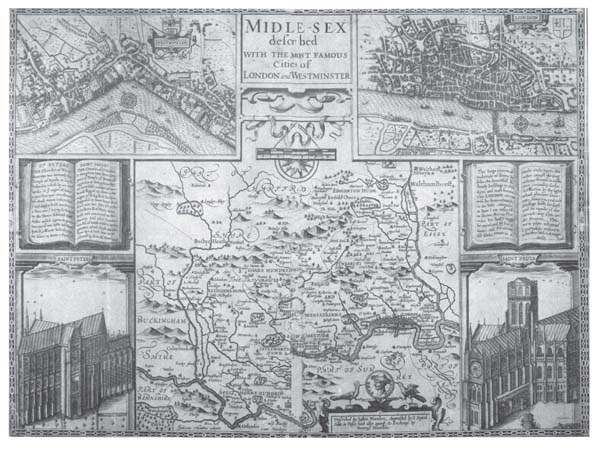
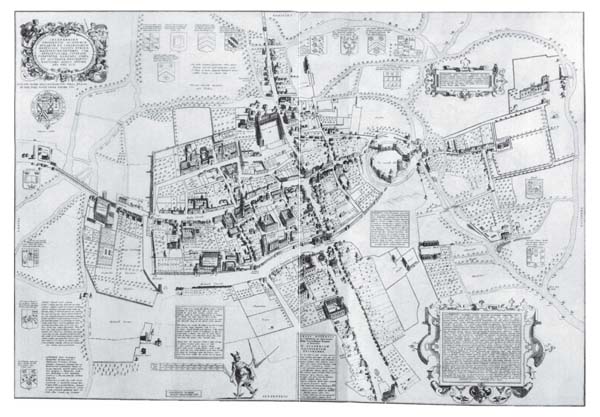
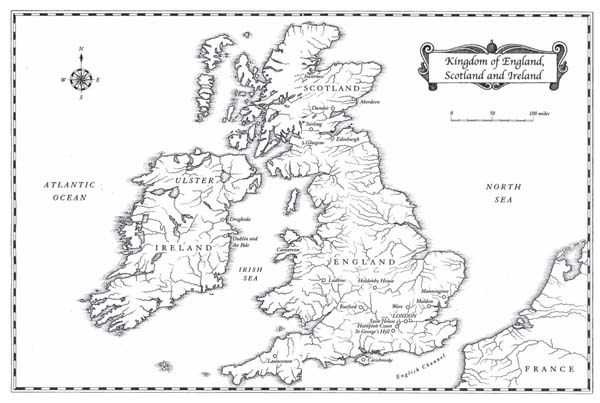
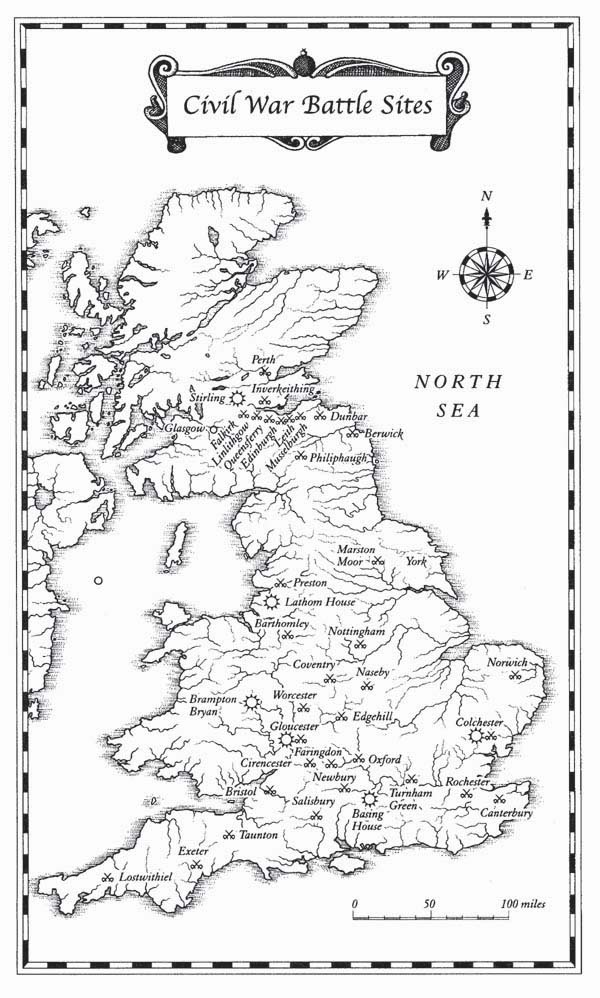
An Epistle to the Gentle Reader
If this were truly a seventeenth-century book or pamphlet, it would be likely to include an epistle to you, the reader. In the seventeenth century, with which this book is concerned, authors and readers approached each other more formally and courteously than is now customary. A book usually began with a polite letter to the gentle reader, a letter which asked for the reader’s attention, apologized for the book’s shortcomings, and explained what benefits patient perusal of the work might offer. The tone was often self-deprecating, and it was usual to deprecate the book itself as ‘my poor book’. The poet Robert Herrick thought his book was likely to be used as toilet paper when his readers were tired of it; Milton repeatedly asked God to fix his awful weaknesses. In addressing the reader as ‘gentle’, the author invited him or her to be so; to be courteous and polite in turn. Gentle also has a class meaning; it implies wealth, and with it education, power and discernment.
I hope it is not too self-conscious for me to emulate this charming tradition and thus to offer a tribute to it. In reviving a good custom and addressing you, gentle reader, my chief purpose is to welcome you to a story that greatly concerns you.
Frankly, I am in hopes that you may be among those to whom the words ‘The English Civil War’ have always stood for an unsolved mystery. The Civil War is perhaps the single most important event in our history, but for rather complex reasons many of the very intelligent readers who abound in these isles know little of it. The great battlefield sites of Edgehill, Marston Moor, and Naseby are difficult to find and poorly marked. The siege sites of Basing House and Donnington Castle are ruins dotted with picnickers rather than sacred memorials to heroic endeavour and ideas. We have no Fourth of July, no Bastille Day to commemorate our own heroic struggle to define and enact freedom, even though on it depended the ideas that were later to lead to those two other revolutions. Self-deprecation can go too far, and as a nation we are perhaps too good at it, so good that it becomes a species of forgetting.
So it is that in these pages I would like to introduce you – gently – to the war and the men and women who fought in it. In this book I invite you with all respect to make the acquaintance of what we call The Civil War – the series of battles and campaigns fought on the field and also in people’s hearts and minds between 1642 and 1649, culminating in the judicial execution of a king and the creation of the only English Republic to date.
You, dear courteous reader, will come to know more anon. You will not come to know everything worth knowing from my poor book alone, but it may make you feel well enough acquainted with its subject to pursue the men and women it sketches through other books, to see them in the streets of your own town or city.
To some of you I should not presume ot offer such an introduction. For some of you, the civil war is an old friend, and I welcome you too to these pages. Among your number are doubtless the formidable amateur experts who also dot our landscape; those who know far more than I about the siege of Gloucester or the range of a demiculverin, those who could draw an accurate sketch of the battle lines at Newbury, those who have an especial hero among the fighting men and women whose stories burst from the pages of history – Fairfax, Cromwell, Charles I. I bow to you and apologize in advance for any errors you may discern. But I also beg you not merely to indulge your passion, but to make the acquaintance of persons whose stories you may not have considered important, especially the stories of noncombatants, the stories of those for whom war was not battle but privation or writing or ideas.
Finally, I address you, discerning and erudite readers, academic historians, colleagues. Not all of you will agree with what I have done here. So it must be, for I hope we might at least unite in stating that no history of this war has ever commanded universal acclamation. It may be that some of you may think, for instance, that cookery writers should not elbow parliamentary debates aside as they do here, for the reason that the latter have more serious influence on the lives of ordinary men and women. But do they? The democratization of simple knowledge is part of the political story of these years. And unlike the form of government, this reform is lasting. Bear with me, tolerate me, and you may find some profit in it.
I also want to say this to you, as an apology for my poor naked book; once upon a time, our courteous readers enjoyed academic history because it was grounded, as was the novel, in a drama of character. Macaulay and Carlyle were read and loved because their version of history was a guide to human nature. For complex and very good reasons, their approach has been largely abandoned by professional historians; indeed, for many a focus on individual character in history is now an irredeemable sign of the amateur. In all my work I am trying to seduce the academy into taking this human approach back, reviving it, and thus giving its revived force to the subjects of our ruminations. If the past is not to be dry, then it must live, and so must its people. I hope I may be forgiven much that is faulty or imperfect for my attempt to return to a moment when history was a vital part of the nation’s idea of who and what human beings are.
I also gratefully greet those of my profession who have made the present book possible by their tireless, often unrewarded and unrecognized attempts to labour through unread and grimy manuscripts and smudged public records in search of those most elusive of all historical personages, the ordinary man and woman. May we all, author and readers, unite in their name. And I commend this my poor book to you above all.
Your very humble servant,
THE AUTHOR
Oxford
February 2006
I The Last Cavalier?
One night in 1712, a man named Thomas Neville lay dying in his own bed, surrounded by family and friends. He was an ordinary gentleman, but in his lifetime he had been among those who had seen the Middle Ages finally disappear, and the modern era emerge. He had seen wonders, and had even made them happen. But the changes he had witnessed were accompanied by violence and terror unmatched in the history of his country. Thomas Neville was the last man to remember that turmoil, the last surviving field officer from a once-great but defeated army, the army of King Charles I.
Thomas Neville had had better reason than most to join the king’s army. He had seen his rich father ordered to give up the house he had grown up in and had heard him say that ‘rather than yield to dishonourable persons, I will make my house my grave’. His enemy – the Parliamentarian Lord Grey of Groby – stormed the house and took his father prisoner; the building was burned to the ground. From then on Thomas Neville and his elder brother William were at war, whether they wished to be or not. In 1644, they fought at Newark; in 1646 at Ashby de la Zouch. Both brothers survived the war, but William was dead by 1661. Thomas survived to tell his stories of dashing Cavalier Prince Rupert galloping to the rescue of his children and grandchildren.
By the time Thomas Neville closed his eyes in death, the war he had fought in had become distant even for his grandchildren. In the decades that followed the war, throughout Britain, people began to make efforts to write down the Civil War stories that their grandfathers had told. Those who had fought themselves had spent the Restoration years writing down their experiences, fighting old battles again. And grandmothers wrote too, for grandchildren who would never know their grandfathers because they lay buried at Edgehill, at Newbury, at Marston Moor or Naseby, or by lesser towns or streams where short sharp engagements had been fought. Some wrote for the God for whom they had shed their blood; others for the Good Old Cause, and still others for the kings living and dead whom they had served. Some recounted their war experiences in the hope of a disability pension, or to explain to a sceptical community exactly what they had done. All of them wrote because they knew they had lived through a time like no other.
Their descendants kept their letters, their diaries, their memoirs faithfully, knowing that in those pages lay a link to a time fast passing from memory into history. Others sought to scrabble together the storm of paper the war had produced; George Thomason tried to collect every pamphlet, newspaper and ballad printed during the war, while Samuel Pepys put together ballads and Edward Hyde and John Aubrey wrote down soldiers’ and survivors’ recollections. Those who had been children when King Charles raised his standard recorded their memories of the lost king; those who had been youths when Cromwell held court at Westminster wrote down what they had seen. Between them all, they kept alive what all history needs: the stories of the people who lived it.
Those who kept these careful records were right about the importance of what they had seen to the lives of the men and women of the future. We owe our state of government to the English Civil War, but most of its beneficiaries have little idea who fought whom or when or why. Nor do most of us care; what little we know seems remote and difficult to grasp, with stiff figures on battlefields and stiffer constitutional debates. Yet actually, the English Civil War was the making of our country. It made us the nation we are, the countries we are, the people we are. It also created those more permanent revolutions by influence: Thomas Jefferson and George Washington recalled and revered the Good Old Cause against the king’s tyranny, and the French revolutionaries had read their Milton. The glories and liberations of that long-ago conflict still benefit us today; so too its failings and limitations are with us, part of our blood, setting the horizon of our expectations. And to understand ourselves, we have to understand the people we were, the people who fought in that war.
This book has two goals: to tell the story of the English Civil War up to and including the execution of the king, and to bring to life the people who fought in it, died in it, and in doing so changed the history of the world for ever.
To do this, I tell the story of the war from the points of view of the people involved. The war is interesting because it was fought by people, men and women. My cast of characters ranges from Charles I himself, disastrous shaper of his own fate, through his most educated and articulate opponents, men like John Milton, and through men and women utterly obscure before the war and glintingly prominent after it, men like Oliver Cromwell, through to what Charles himself might have called ‘the meaner sort’, men like witch-finder Matthew Hopkins and revolutionary Gerrard Winstanley, godly women like Anna Trapnel. We first glimpse these people before the war, and we see how the war changes them, creates unexpected chances for them to change their lives, overthrows what they thought they could take for granted. When the war ends, when King Charles is dead, we see what all these people have left, what remains of their lives. Mine is not an even-handed portrait. Not all of these people represent something beyond themselves and their individual stories. Some figures that were important do not get as much space as the well-informed reader might expect. But this unevenness was part of contemporaries’ experience of the war; they too did not always see a ‘big picture’, but the small details of a burned barn, a changed pattern of church service, a son lost in battle.
The armed conflict was also a major event in its own right. Estimates suggest that around 800,000 people in the British Isles died during its course, the majority of them in Ireland. One in four of all men served in the armies on one side or the other, which suggests that a majority of able-bodied men was involved. The war was not a clean and tidy affair of sabres and dashing cavalry charges; it was a bloody business largely driven by guns – cannons and muskets and pistols – which at times appears to have combined the worst aspects of the American Civil War and Vietnam. Both sides used soft lead bullets that did terrible damage to flesh. For years afterwards, the London streets were full of one-legged beggars. Cities and castles were razed to the ground.
There were atrocities involving civilians, again especially in Ireland. The war was expensive, and individual families were ruined – or made – by its sweeping hand. And so people came to see change all around them. They thought that the world had been transformed for ever, for them and for their families. Because they thought that, some of them began questioning many taken-for-granted aspects of life, looking in new ways at the purpose of women, the purpose of government and of its leaders, and at the purpose of human beings. Some of what they invented still governs our lives: universal male suffrage, promotion on merit, women’s involvement in politics, the ordinary man’s need for a home and food.
Isabella Twysden’s Civil War diary illustrates the way big events look to small people. In her journal, however, a big event could be personal or political; she gave equal weight to the birth of a new baby, or King Charles’s capture by his enemies in the Parliamentarian army. She tried to chronicle her own life and the life of the nation, with no anxiety about the disparity of scale, because to her both kinds of events were important.
She tried to keep a record of news, a daily chronicle. She didn’t write down what she felt, but only what happened. Her first three entries for 1645 read:
The first of Janua. Mr John Hotham was beheaded on Tower Hill.
The 2nd of Janu Sr John Hotham (father to Mr Hotham) was beheaded on Tower Hill.
The 10 of January My Lord of Canterbury was beheaded on Tower Hill and was buried at Barking Church
Interspersed with the doings of the great she recorded events crucial to her:
The 8 Feb I came to Peckham great with child, and ride all the way a horseback, and I thank God had no hurt
The 6 of March [1645], between one and two in the morning I was brought to bed of a boy, the 7 he was christened and named Charles, the gossips [godparents] were my brother Charles and Francis Twysden and my Lady Astley [wife of Jacob Astley]
The 11 of March there was the terriblest wind, that had been known since ever the like, it did a great deal of hurt
The 3 of April a little before 3 in the morning my sister Twysden was brought to bed of a girl at Maling, it was christened the 5 and named Ann, without gossips … the new way.
It might seem incongruous that Isabella recorded this mass of detail about her baby’s christening and her niece’s christening in a war diary, but she did so because domestic details like this had themselves become battlefields. In particular, the baptism of babies had become caught up in the political divisions the war had created. Many families of traditional views were made miserable by the difficulty of getting vulnerable infants baptized by their preferred rite. As George Thomason amassed a collection of over a hundred tracts on the question of infant baptism, worried parents tried to do their own homework, anxiously poring over the Bibles and pamphlets much as modern parents might agonize over vaccination. In 1646, when their child was born, John and Lucy Hutchinson took some time to decide, but eventually chose not to have the new baby baptized, whereupon, Lucy wrote, they were reviled as sectarians. The Directory of Public Worship, which replaced the prayer book in 1645, dispensed with the sign of the cross, and the minister was told bluntly to sprinkle the child’s face ‘without adding any other ceremony’. Godparents were also ruled out firmly, and instead the child was presented by its father. Some people accepted this philosophically. Still others rejoiced at the opportunity to choose adult baptism, and found names for themselves that reflected their faith. But the diarist John Evelyn loathed it, and had his babies christened at home, according to the old rite, while he continued to act as godparent for friends who felt the same.
This is how war and other such large events are experienced: Isabella juxtaposes Fairfax’s capture of 4000 soldiers at the pivotal battle of Naseby in 1645 with worries about the money owed to the baby’s monthly nurse, who is leaving for London. For her, the personal and the political are well blended. My intention is to achieve the same mix in this book. This method has its drawbacks, as Isabella’s diary shows; the stories that result can seem to jump about, and strict chronology is sometimes sacrificed to the writer’s interest in particular events. But it is truer to how this war was felt. There was not one Civil War, but thousands, different for each person involved.
So large impersonal changes such as constitutional reforms are important but only because they are eventually experienced by people. I found Charles Stuart much more interesting than absolutism, Oliver Cromwell more compelling than Puritanism. And neither man is helpfully summed up by a list of his beliefs, because both were also feeling human beings, inconsistent and emotional, and so were all those who fought alongside them.
II The Meek-Eyed Peace
The story of the Civil War begins with the world before the cataclysm. The group of people who were to play great roles in the enormous events to come were in 1639 leading lives that seemed to them normal. There were political struggles, there was murmuring and discontent, but these disputes were well within the realm of normality. True, there had been a war with Scotland, and matters there were still not settled. But there had been such wars before. There was nothing to suggest that the nation was about to be violently torn in pieces by the most costly armed conflict in its history. Even the two protagonists, Charles and Cromwell, could have no inkling of what was coming.
By focusing on a morning in the late winter of 1639, we can catch a glimpse of those last moments of unthinking normality. On that morning Charles I was hunting. The king loved hunting on horseback, and loved it far more than the tedious obligations that came with rule. When on a progress, a tour to meet his subjects, Charles would sneak off to the chase rather than remain to shake the lord mayor’s hand. On a cold morning, a winter’s morning, the horse and the freshly killed game both steamed lightly, the heat of their bodies drowning out the scent of trodden leaves. For Charles, his horse was more interesting and less demanding company than his subjects; it did not rush up to him with importunities he did not understand, did not beg for his touch to heal it of nauseating diseases. It served him and knew its place – and so did those who rode with him. Through hunting Charles could feel connected with his father, James I, who had also loved the chase, but who had not very greatly loved Charles. And he could feel absolute – absolutely confident that the still-vast royal forests belonged to him and no one else. In those forests were deer that had been bred by his royal predecessors, Henry VIII and Elizabeth I, as well as his father. The forests were also still dangerous, full of wild boar. In their leafless and endless embrace, Charles need not fear having to treat with anyone. He ruled all he saw. And at just a year short of forty, his grip on power had become tight and remorseless.
His future foe, Oliver Cromwell, loved to hunt on horseback too, and like Charles, a winter morning in 1639 might have found him at the chase. We can picture both, then, crouched over the carcass of a slain deer, ceremoniously dividing the venison for various people: their fellow-hunters, those who were due a gift, the hunt servants. This picture to us suggests mess, but to Charles and Cromwell it would have meant order, the comforts of ritual. Bloody and dangerous as hunting could be, it was a moment for all gentlemen to feel in control of the world, like God looking over his creation on the seventh day of rest. An important metaphor for Cromwell, for ever since his extreme depression in his middle twenties, religion had become his reason for living. Now a man of forty, he had put his turbulent youth firmly behind him. But he still loved the chase. The experience of hunting yoked the gentry to the aristocracy; it made gentlemen feel like rulers.



